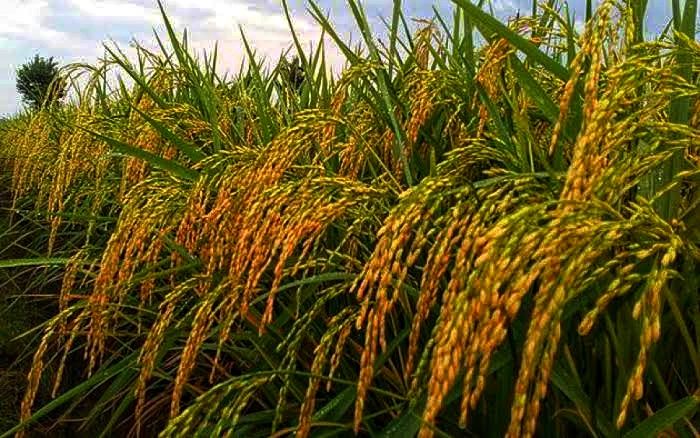
Several practices in various countries have found that the SRI method is successful in reducing production inputs as low as possible. This is in line with the efforts of organic farming activists to cultivate the land in a sustainable manner.
The result, found a relationship between water conservation in the SRI rice cultivation system and soil conservation efforts adopted in organic rice cultivation. Currently, many organic farmers are implementing rice cultivation using the SRI method. SRI organic rice farming pattern is a combination of SRI rice cultivation method which was first developed in Madagascar, with organic rice cultivation method in organic farming practice. This method will improve the function of the soil as a growing medium and a source of plant nutrients. With the organic SRI system, the ecological cycle will run well because it utilizes soil microorganisms naturally. In turn, the balance of the ecosystem and environmental sustainability will always be maintained. On the other hand, the products produced by this method are healthier for consumers because they are free from exposure to harmful chemicals. Through this system, soil fertility is restored so that ecological cycles can resume properly by utilizing soil microorganisms as a provider of metabolite products for plant nutrition.
Through this method, it is hoped that environmental sustainability can be maintained properly, as well as the final product produced, which in fact is healthier for consumers because it is free from exposure to harmful chemicals.
The selection of SRI organic rice cultivation methods can produce the final product in the form of organic rice that has high quality as healthy rice, seen from the following aspects:
Environmental aspects, by eliminating the use of chemical fertilizers and drugs and indirectly measurable water use management have helped conserve the environment. Aspects of health, for consumers the resulting product will be healthier and healthier, because it does not contain residues of harmful chemicals that can cause various kinds of diseases in the human body. High productivity, for producers or farmers, the application of this method can increase crop yields which in turn generate maximum profits. High quality, the resulting product has better quality than conventional products, so the price will certainly be better.
Young seedling plants are less than 12 days after sowing when the seeds are still 2 leaves Seedlings are planted with one perforated tree with a minimum distance of 25 square cm Transplanting should be as soon as possible (less than 30 minutes) and care must be taken not to break the roots Rice planting with shallow roots Water regulation, giving water a maximum of 2 cm and the soil is not irrigated continuously until it is submerged and full, but only moist (intermittent or interrupted irrigation) Improved soil aeration by loosening or plowing Weeding since the beginning of about 10 days and repeated 2-3 times with an interval of 10 days Maintaining the balance of biota
Water-saving plants, During growth from planting to harvest, it provides a max of 2 cm of water, the best is about 5 mm and there is a drying period until the soil cracks (irrigation is interrupted) Save cost, only need 5 kg seed per hectare. Does not require the cost of removing seeds, does not require the cost of moving seeds, less planting power, etc. Save time, plant young seedlings 5 – 12 days after sowing, and harvest time will be earlier Production increased, in some places reaching 11 tonnes per hectare Environmentally friendly, does not use chemicals and is replaced by using organic fertilizers (compost, cages and local micro-organisms), as well as the use of pesticides.
BEST REGARDS